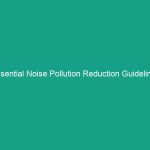Good Morning Team!
Today, we’re diving into a crucial topic that often gets overlooked but can have significant consequences if neglected: Not a Big Deal Until It Is: Essential Safety Guidelines You Need. We all know that Safety isn’t just a checklist item; it’s a mindset that can prevent accidents and save lives.
Understanding “Not a Big Deal Until It Is”
The phrase “Not a Big Deal Until It Is” perfectly encapsulates the attitude many of us have towards Safety protocols. We might think that certain risks are minor, but the reality is that ignoring them can lead to serious consequences. Understanding this mindset is vital for fostering a culture of safety in our workplace.
This concept is particularly important in our daily operations, where routine tasks can lead to complacency. Many employees may believe they know the risks and how to manage them, but complacency can be a dangerous trap. The consequences of neglecting safety can range from minor injuries to severe accidents that could affect not just individuals but the entire team.
Key Hazards, Risks, and Safety Considerations
Let’s identify some common Hazards associated with this mindset:
- Slips, Trips, and Falls: Often viewed as minor accidents, these can lead to serious injuries if not taken seriously.
- Manual Handling: Lifting or carrying without proper techniques can result in long-term injuries.
- Electrical Safety: Overlooking the importance of checking equipment can lead to electrical shocks or Fires.
- Chemical Exposure: Not following safety guidelines when handling chemicals can result in severe health issues.
Ignoring these hazards can have real-world consequences, such as lost workdays, increased medical costs, and a decline in team morale. It’s essential to recognize that what may seem trivial can escalate into serious issues if not addressed promptly.
Best Practices, Procedures, & Actionable Advice
To prevent issues arising from the “Not a Big Deal Until It Is” mindset, we need to implement Best Practices in our daily routines. Here are some key Procedures to follow:
- Conduct Regular Safety Inspections: Ensure that safety checklists are completed regularly and any issues are addressed immediately.
- Utilize Proper Lifting Techniques: Always bend at the knees, keep your back straight, and lift with your legs.
- Wear Personal Protective Equipment (PPE): Always use the appropriate PPE for the task at hand, even if the task seems minor.
- Report Hazards: Encourage team members to report any unsafe conditions or near misses immediately.
Let’s take a moment to reflect on a real-world incident. A colleague once ignored the need for a safety harness while Working at Height, believing it was unnecessary for a quick task. Unfortunately, that decision resulted in a severe fall, emphasizing that safety protocols are in place for a reason – to protect us.
Regulations, Standards, and Compliance
It’s essential to understand that safety guidelines are often backed by Regulations and Standards set by organizations like OSHA (Occupational Safety and Health Administration) and ISO (International Organization for Standardization). Compliance with these standards is not just a legal requirement; it’s a commitment to our own safety and the safety of our colleagues.
Failure to comply with safety regulations can result in hefty fines, legal issues, and increased risk of accidents. Moreover, a culture of safety leads to a more productive work Environment, as employees feel valued and secure.
Employee Engagement & Discussion
Let’s open the floor for discussion. Think about the following questions:
- What safety challenges have you encountered related to this mindset?
- Can you share an experience where ignoring a safety guideline led to a close call or an accident?
- What suggestions do you have for improving our safety practices?
Your insights are invaluable in creating a safer work environment. Remember, safety is a shared responsibility, and each voice matters.
Conclusion & Key Takeaways
In conclusion, let’s remember that safety should never be viewed as a minor issue. By adopting a proactive approach and adhering to essential safety guidelines, we can prevent accidents and ensure a safe workplace for everyone. Always keep in mind the principle of “Not a Big Deal Until It Is” and let it guide your actions.
Thank you all for your attention and for your commitment to safety. Let’s make it a priority every day!


